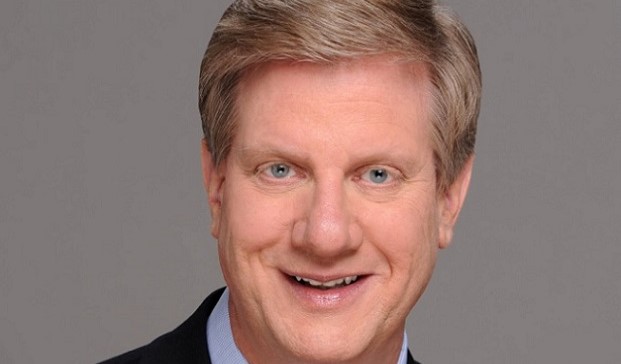
CHICAGO—The multifamily apartment market looks incredibly robust in many US markets if you just examine the top-of the-line numbers. Developers have recently built thousands and thousands of new apartment units, and leasing activity for most of these developments has been healthy.
However, construction costs have increased quite a bit in the last few years, partly due to the escalating costs of land and labor. And high costs have helped ensure that most new construction takes place in or near downtown core areas, leaving vast stretches of the suburbs untouched.
“These downtown luxury properties have to have very high rental rates, but that also means they have become unaffordable to millions of renters,” Michael Zaransky, managing principal, MZ Capital Partners, tells GlobeSt.com. With a few exceptions, suburban areas generally can't support sky-high rental rates, making new construction difficult to justify. In the Chicago area, for example, “if you leave out Evanston and the North Shore, there's nothing.”
And this may open up opportunities for investors comfortable with the value-add suburban sector. “There are many suburban, garden-style assets that were built in the 90s, some even in the 80s, that have real potential, and just need the types of amenities that modern renters now look for,” says Zaransky.
His investment firm, based in Chicago's north suburbs, is now looking for such properties in metro areas with growing populations and healthy job markets. Possible targets include: Chicago; Minneapolis; Indianapolis; Orlando; Phoenix and Las Vegas. Essentially, MZ Capital Partners wants class B properties in class A locations. That means locations with healthy economies and great transportation options for residents traveling toward the urban core.
“There is plenty of population and job growth in the suburbs, although it might not get as much press as growth in the downtowns,” he says. Kraft Heinz made a big media splash when it decided to leave its suburban Northfield campus for space in the city. Less attention was paid when “Medline fully occupied that campus and replaced all those jobs.”
And once Zaransky's firm purchases an asset, the real work begins. “At a minimum, I foresee expanding and upgrading fitness centers, and upgrading clubhouses and pools,” he says. “Also, common areas need things like dog parks, children's play areas, and outdoor barbecues.”
Zaransky anticipates spending between $5,000 and $10,000 on the interiors of each unit. Instead of laminate surfaces, renters will have stone or granite, as well as new floors and new kitchen cabinets. Overall, this trend should provide renters with a great “alternative to being priced out of the market.”

CHICAGO—The multifamily apartment market looks incredibly robust in many US markets if you just examine the top-of the-line numbers. Developers have recently built thousands and thousands of new apartment units, and leasing activity for most of these developments has been healthy.
However, construction costs have increased quite a bit in the last few years, partly due to the escalating costs of land and labor. And high costs have helped ensure that most new construction takes place in or near downtown core areas, leaving vast stretches of the suburbs untouched.
“These downtown luxury properties have to have very high rental rates, but that also means they have become unaffordable to millions of renters,” Michael Zaransky, managing principal, MZ Capital Partners, tells GlobeSt.com. With a few exceptions, suburban areas generally can't support sky-high rental rates, making new construction difficult to justify. In the Chicago area, for example, “if you leave out Evanston and the North Shore, there's nothing.”
And this may open up opportunities for investors comfortable with the value-add suburban sector. “There are many suburban, garden-style assets that were built in the 90s, some even in the 80s, that have real potential, and just need the types of amenities that modern renters now look for,” says Zaransky.
His investment firm, based in Chicago's north suburbs, is now looking for such properties in metro areas with growing populations and healthy job markets. Possible targets include: Chicago; Minneapolis; Indianapolis; Orlando; Phoenix and Las Vegas. Essentially, MZ Capital Partners wants class B properties in class A locations. That means locations with healthy economies and great transportation options for residents traveling toward the urban core.
“There is plenty of population and job growth in the suburbs, although it might not get as much press as growth in the downtowns,” he says. Kraft Heinz made a big media splash when it decided to leave its suburban Northfield campus for space in the city. Less attention was paid when “Medline fully occupied that campus and replaced all those jobs.”
And once Zaransky's firm purchases an asset, the real work begins. “At a minimum, I foresee expanding and upgrading fitness centers, and upgrading clubhouses and pools,” he says. “Also, common areas need things like dog parks, children's play areas, and outdoor barbecues.”
Zaransky anticipates spending between $5,000 and $10,000 on the interiors of each unit. Instead of laminate surfaces, renters will have stone or granite, as well as new floors and new kitchen cabinets. Overall, this trend should provide renters with a great “alternative to being priced out of the market.”
Want to continue reading?
Become a Free ALM Digital Reader.
Once you are an ALM Digital Member, you’ll receive:
- Breaking commercial real estate news and analysis, on-site and via our newsletters and custom alerts
- Educational webcasts, white papers, and ebooks from industry thought leaders
- Critical coverage of the property casualty insurance and financial advisory markets on our other ALM sites, PropertyCasualty360 and ThinkAdvisor
Already have an account? Sign In Now
*May exclude premium content© 2025 ALM Global, LLC, All Rights Reserved. Request academic re-use from www.copyright.com. All other uses, submit a request to [email protected]. For more information visit Asset & Logo Licensing.








